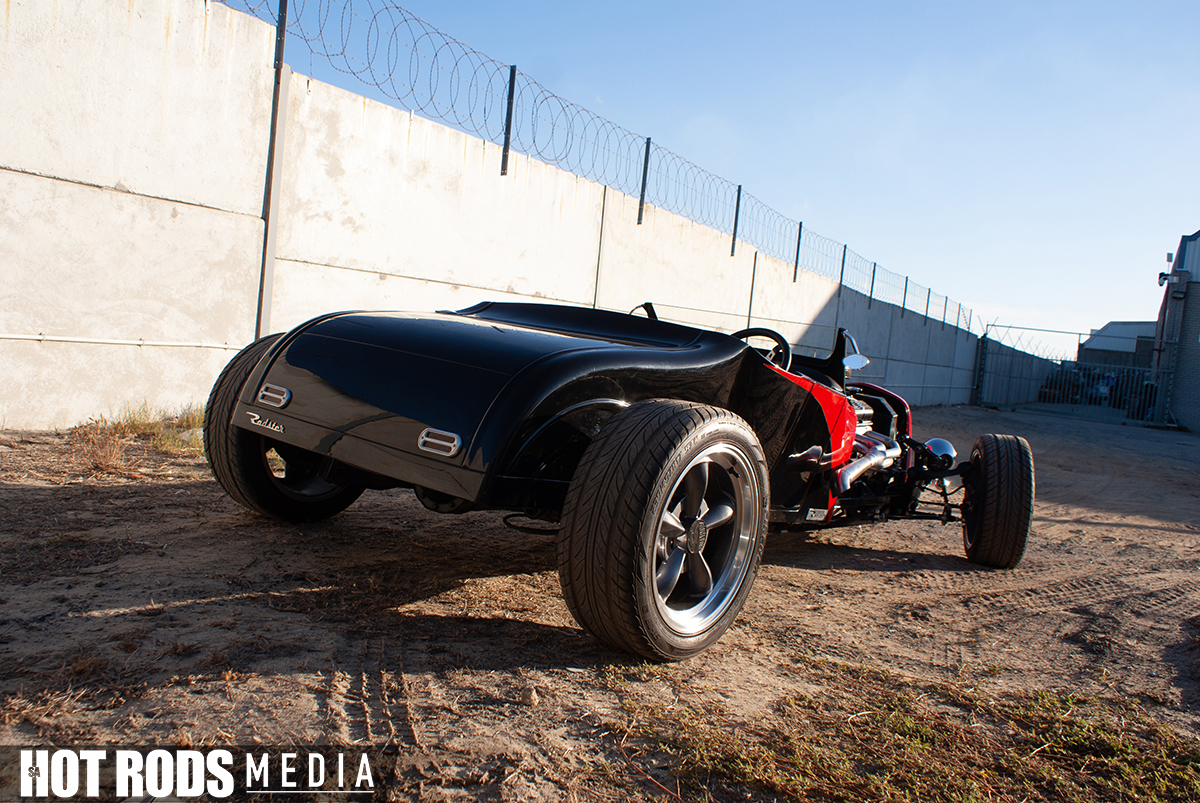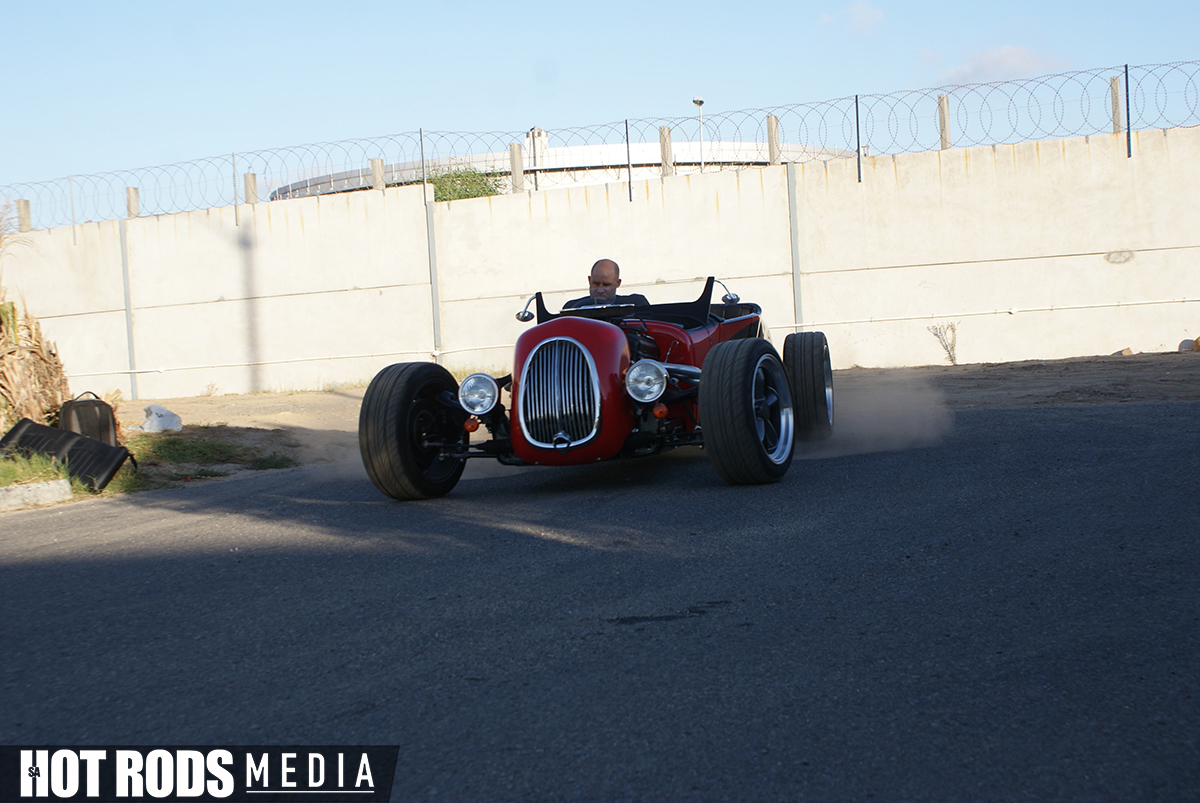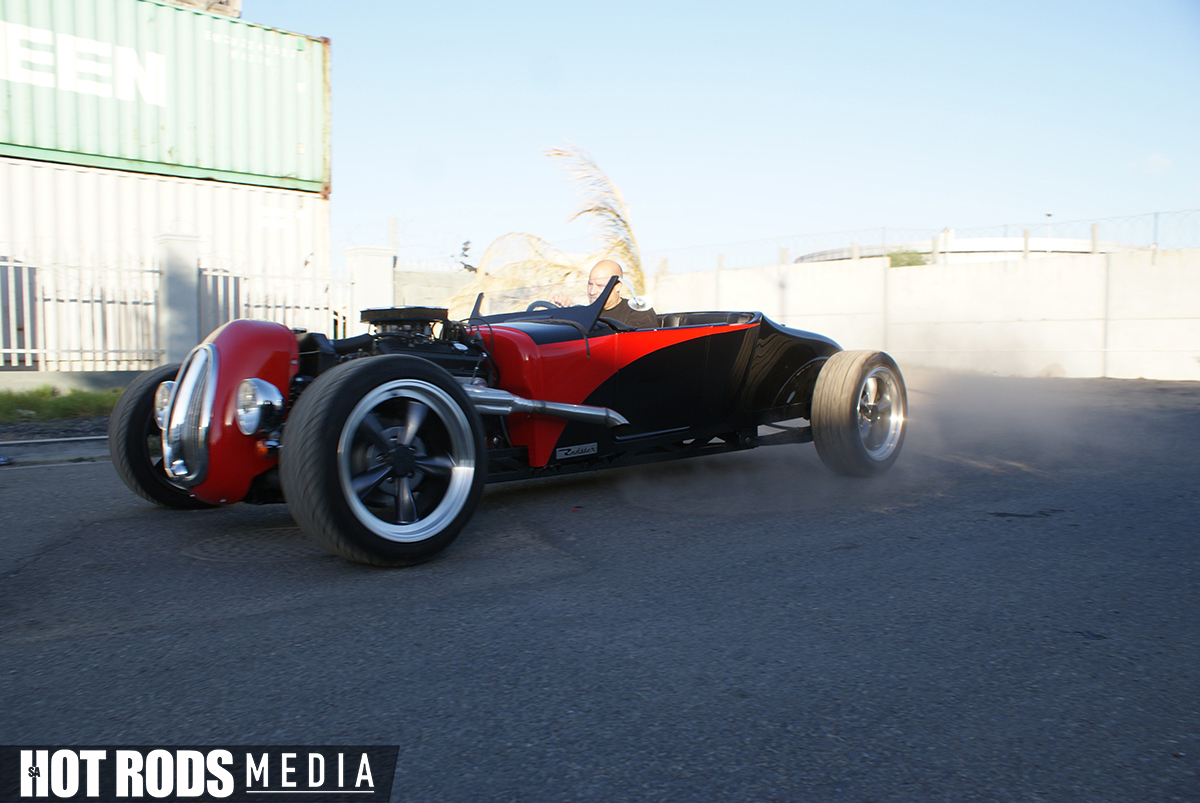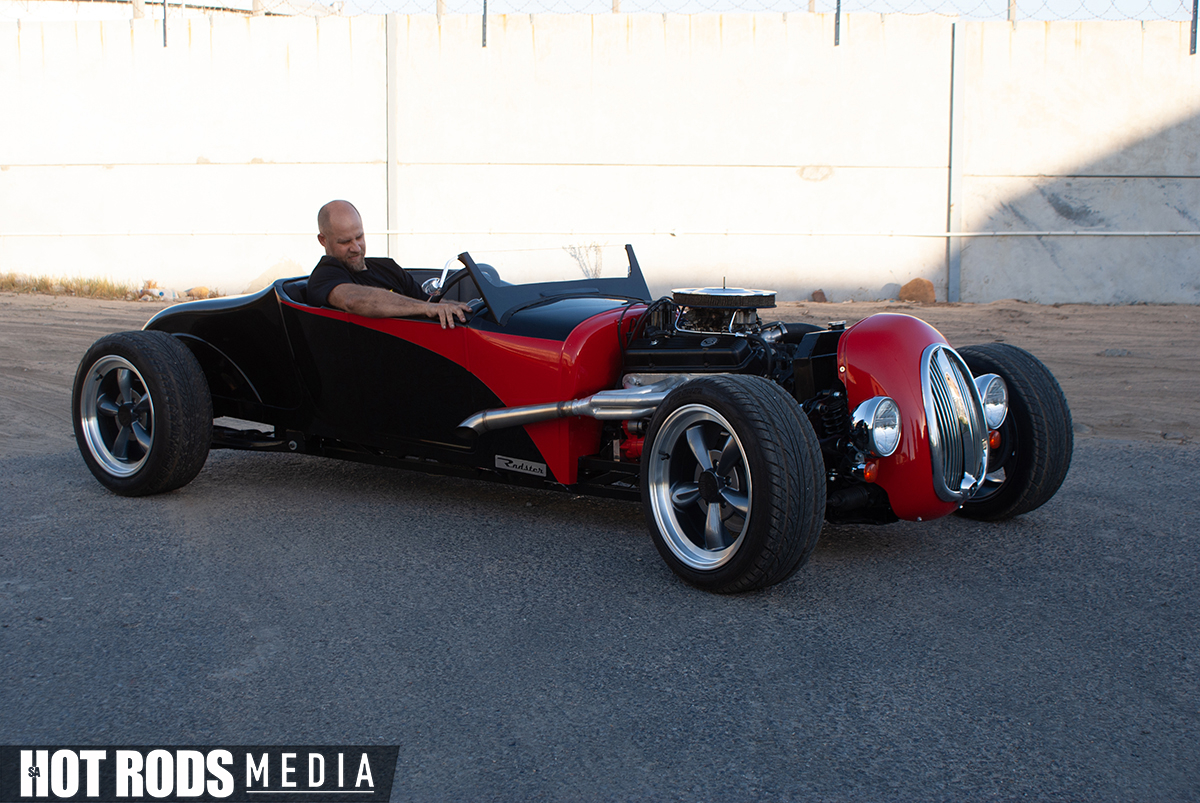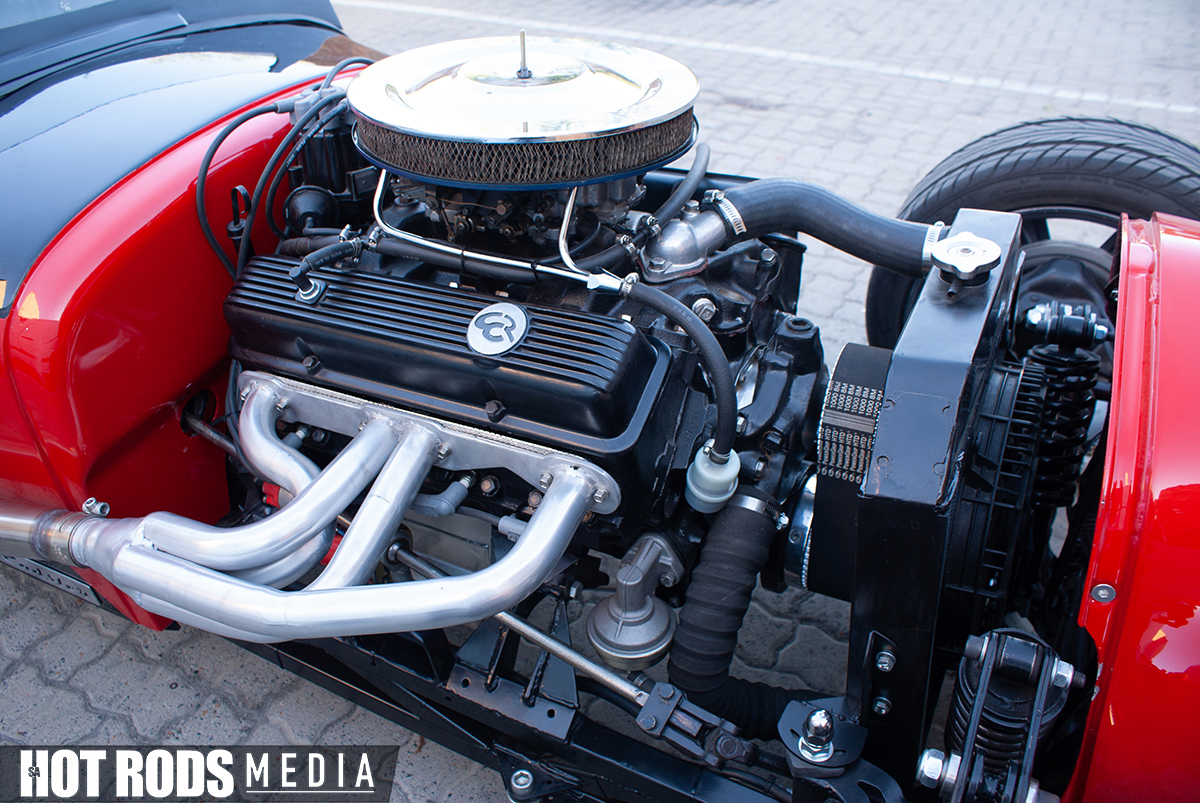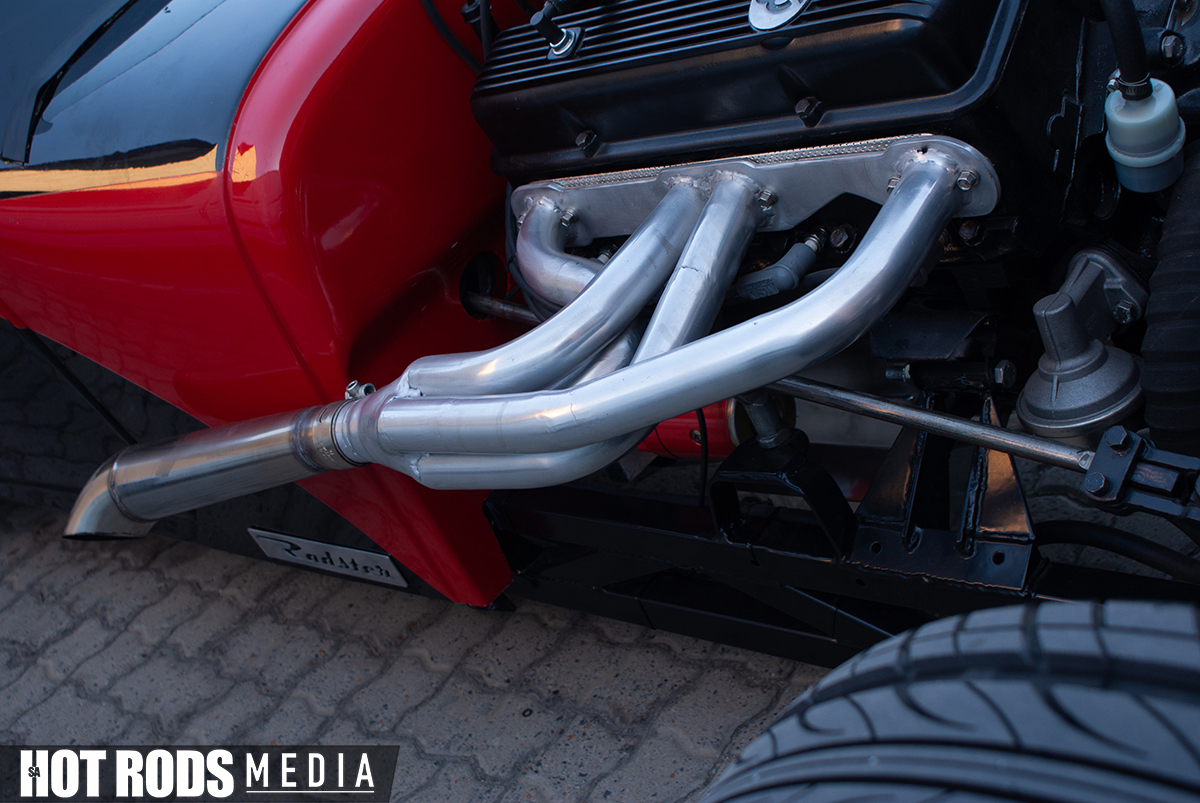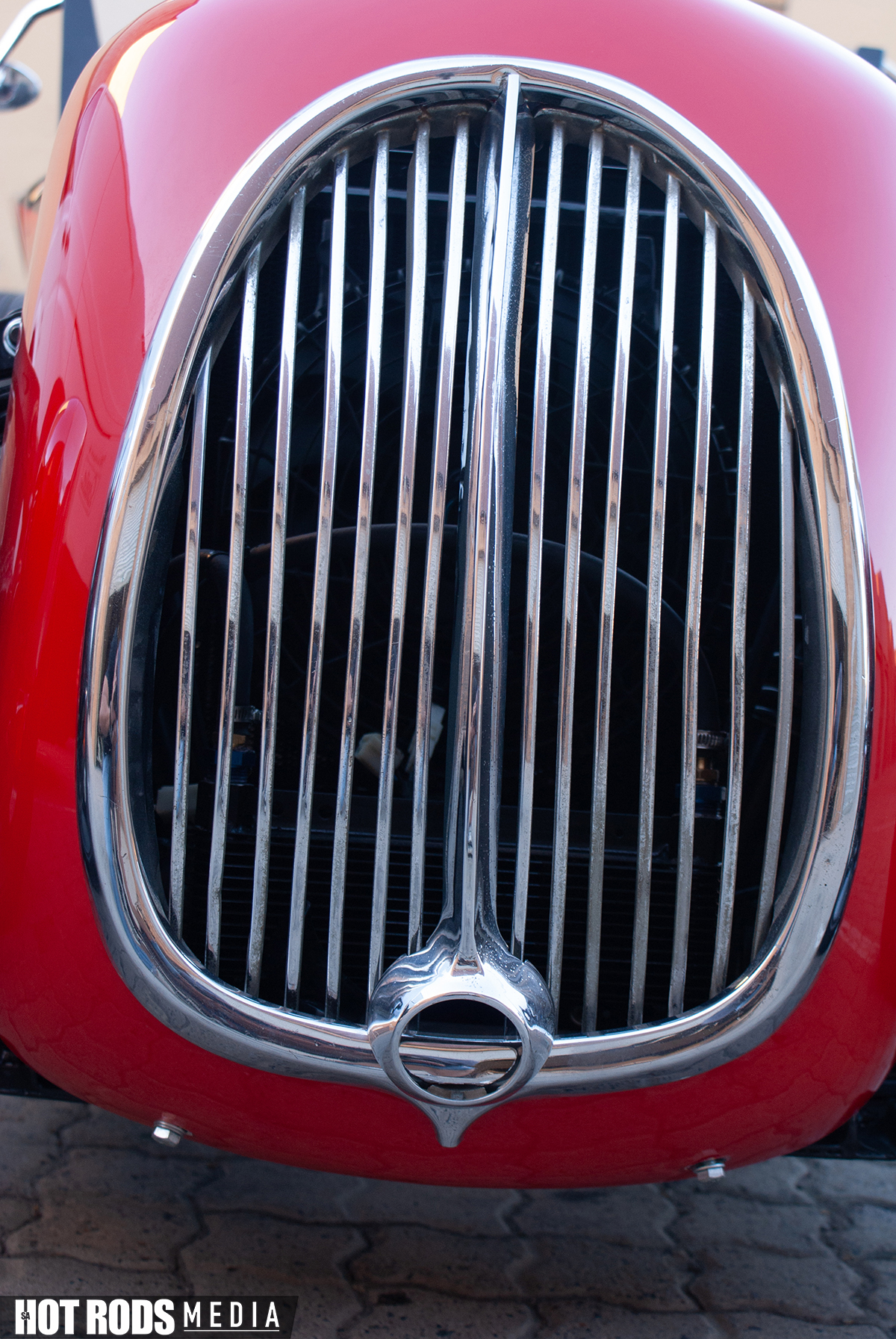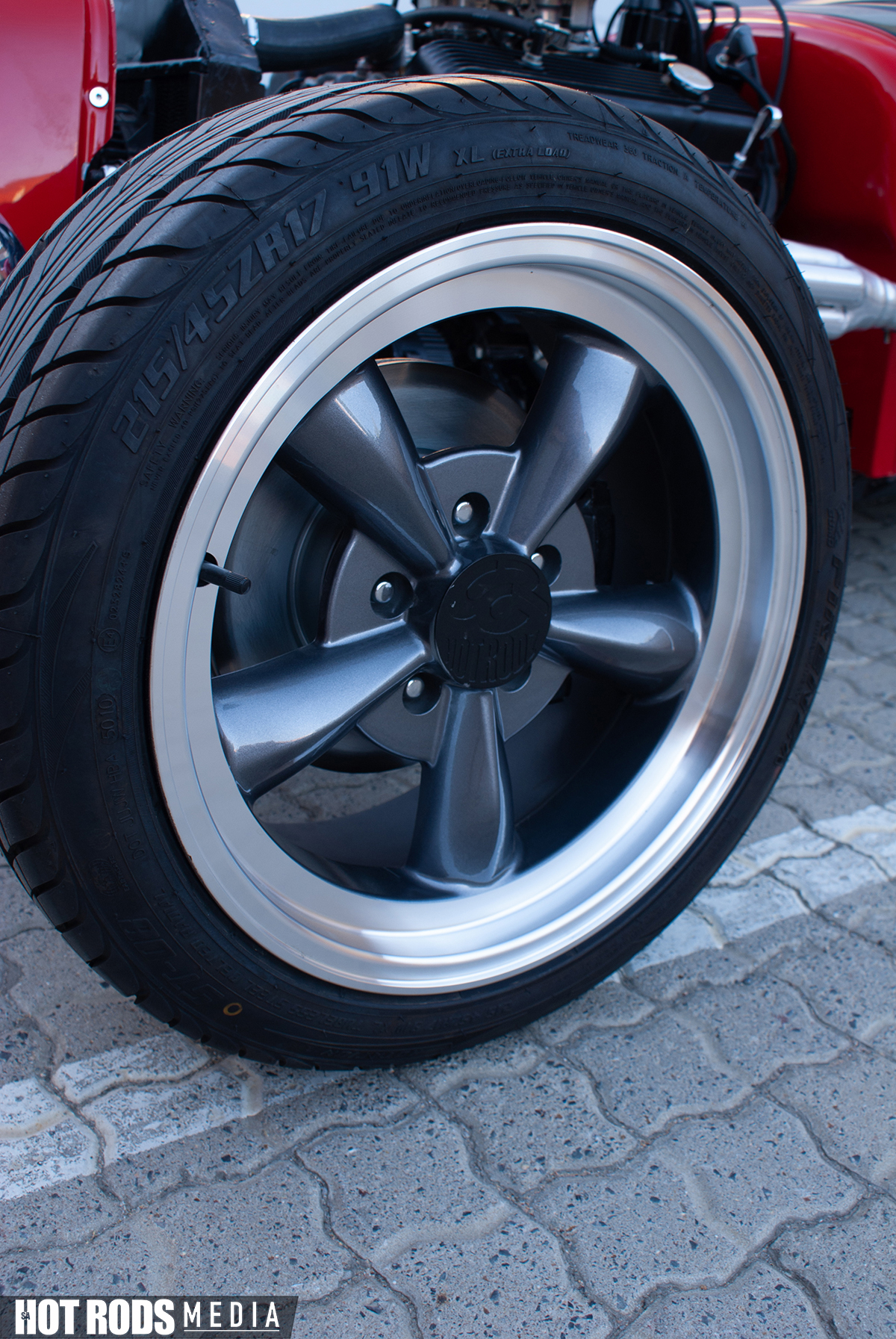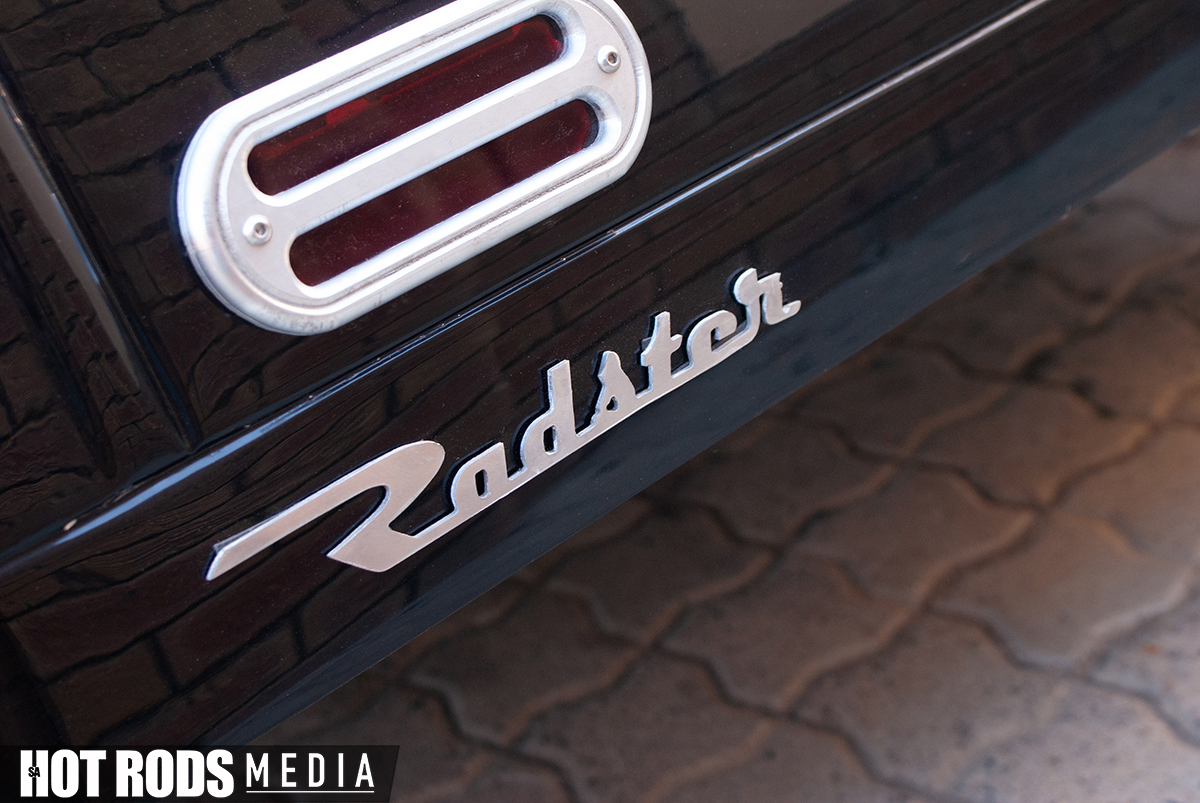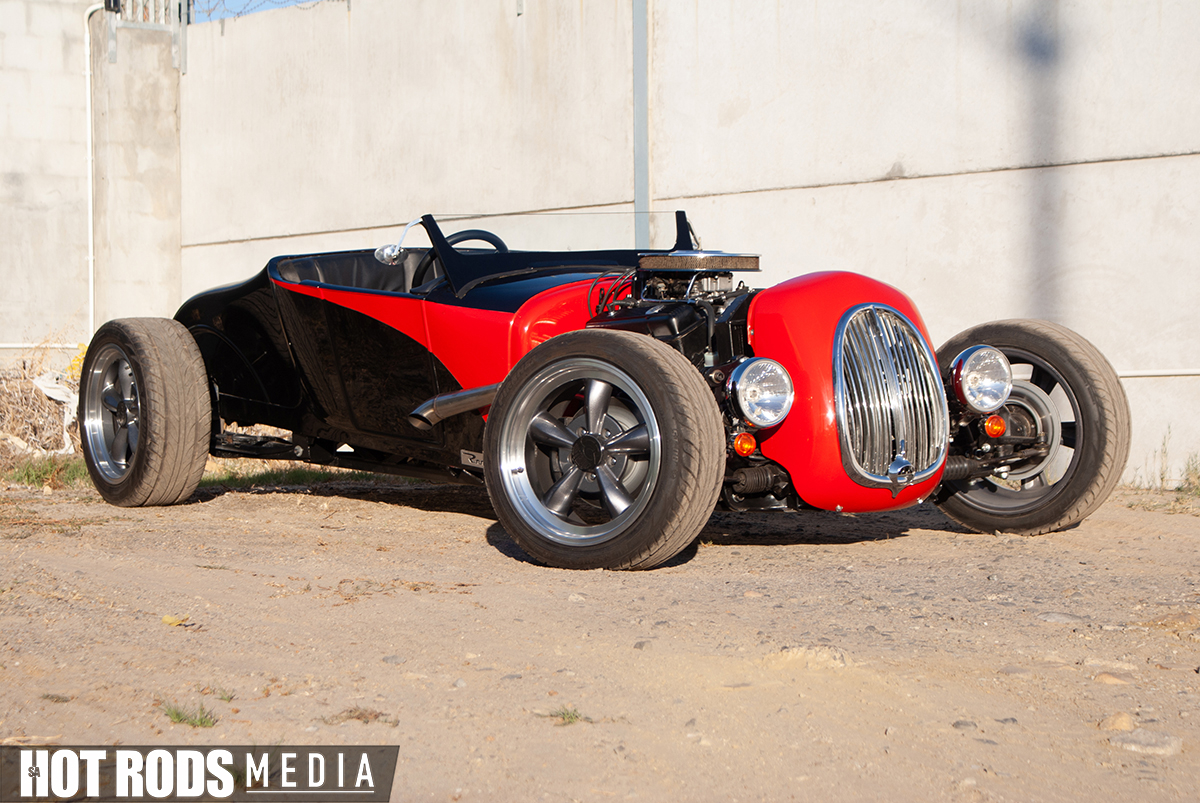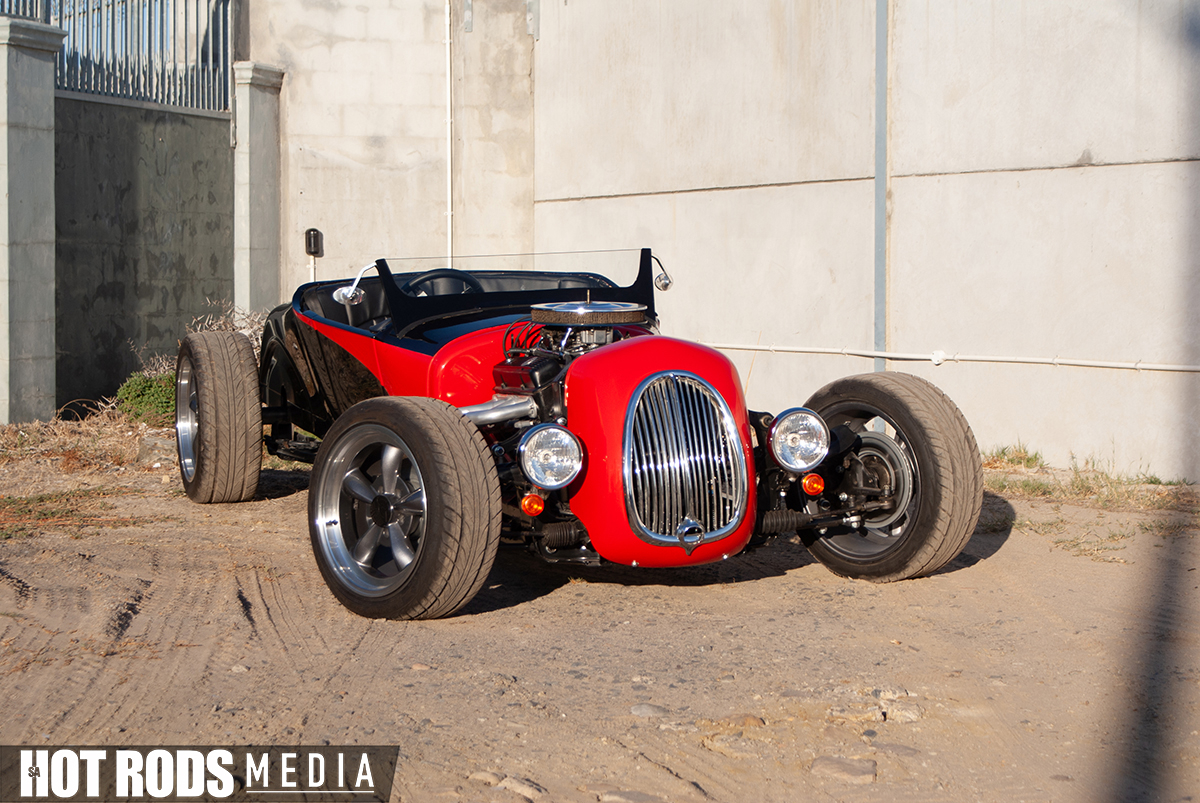1927 Track T Roadster Called The Radster
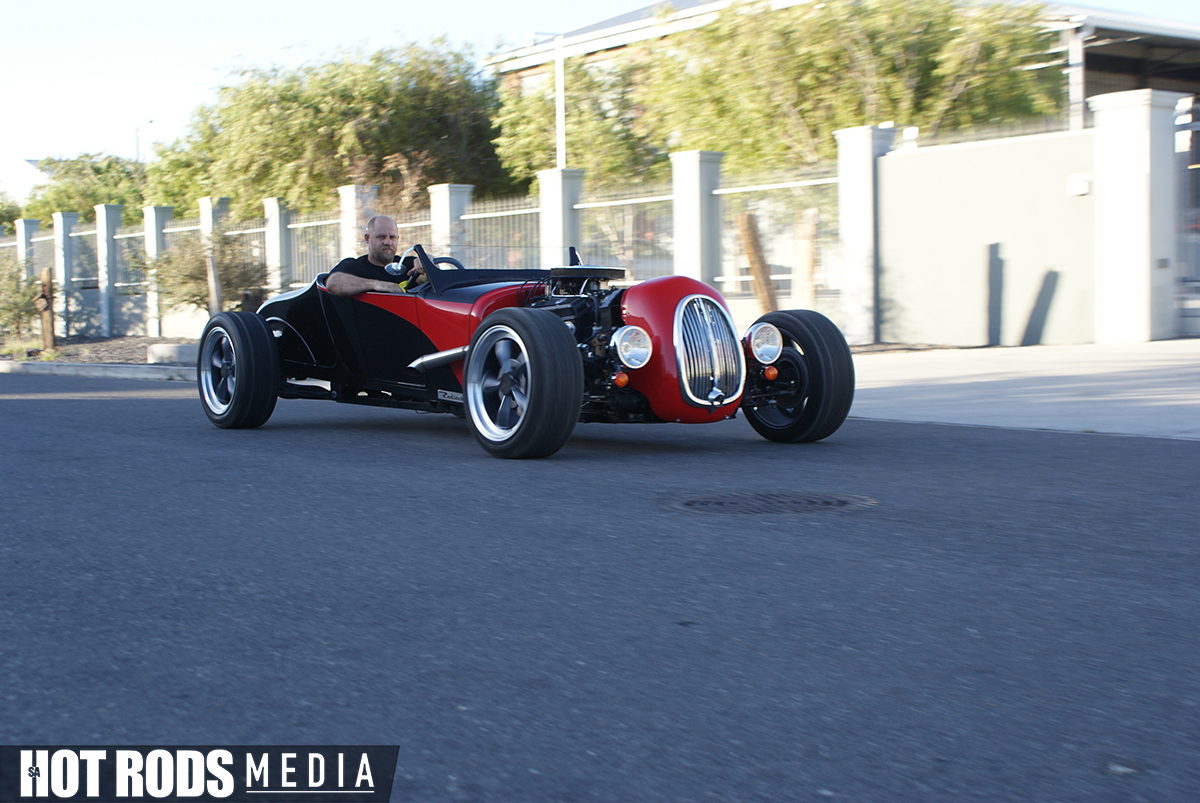
Built By Karl Ebel
Karl’s mind started racing, and he knew he had to have one. He wasn’t sure exactly what he’d do with it at first, but when he finally told me he’d finished his 1927 Track T Roadster, I was beyond excited. Here’s the story of how Karl’s first Miller Track T, affectionately dubbed the Radster, came to life.
From the start, Karl’s vision was clear: to build a 1927 Roadster from Miller, blending race car engineering with the styling cues of those “track-nosed” Roadsters that tore up the dry lakes in the ’40s and ’50s. Combining this retro style with a few modern rodding trends, Karl created the Radster—a true beast of a Track T.
The Low Down
The build began with a custom CCR lattice-style chassis designed for superior rigidity. Karl then added a custom suspension setup. At the rear, a four-link suspension with a Panhard rod and coil-over shocks was paired with a Chevy rear end. Up front, he opted for an adjustable custom CCR push rod inboard suspension system, giving the Radster the benefits of a modern suspension setup while maintaining clean, uncluttered lines around the track nose. The front brakes are BMW-spec ATEs with vented discs, while big Chevy drums handle braking at the rear.
Under the open hood lies a classic 327 Chevy engine, a factory 250hp motor with a steel crank. Karl enhanced the engine with an Ignitor ignition system, MSD plug leads, a Holley carb, and a high-torque starter. One of the standout features of this setup is the “Millerspeed 2” belt drive, which replaces the factory pulleys. The belt drive produces a supercharger-like whine that’s music to the ears of any gearhead. The exhaust, custom-built by Marius, features baffled stainless steel cones that sound perfect at idle and downright wild at higher RPMs. Backing the venerable 327 Chevy is a TH350 transmission with a B&M shift kit.
From the Outside
The Miller body was channeled over the CCR chassis, giving the Radster a more aggressive stance. The body was then painted in Ferrari red and midnight black by Exclusive Coachworks, complete with a custom graphic from Creativecarversions Customcarbuildersretro. The exterior features a custom windshield with billet street rod mirrors, Creative Carversions Universal milled aluminum taillight kit with LEDs, and a modified grille in the track nose from a well-known vintage car. A neat stainless fuel filler cap adds a touch of convenience and style.
Inside, the Radster keeps things simple. The interior features a neatly styled bench seat and door panels in timeless black. The dash is a cut-down and modified 1940 Chevy piece, complete with a ‘floating speedo’ and a complement of vintage Smiths gauges. A classic Hurst quarter stick handles the shifting duties, while steering is done via a classic CCR wheel.
The Radster rolls on Torque Thrust-style wheels from Stateside, measuring 17” x 8” in the rear with 235 Firenzas, and 215s in the front.
In the end, Karl’s Radster turned out exactly as planned. This little beast of a Hot Rod is equally at home on the track, a country road, or even in the urban jungle. Wherever you find yourself, the Radster is an absolute blast to drive.

